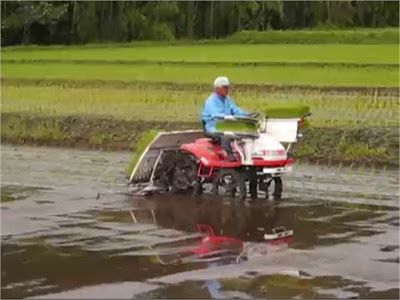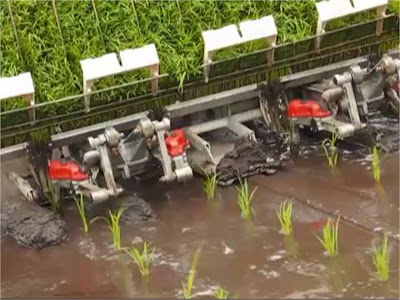Reciprocity: You scratch my back and I’ll scratch yours: tit for tat; this for that; the turnabout that’s fair play, reciprocity. Reciprocity can be a wonderful thing. If you treat your spouse lovingly and tenderly, then most likely your spouse will respond the same way: Beautiful, beautiful reciprocity.
But there can be an edge to reciprocity, as well. The nuclear arms race in the cold war was a case of reciprocity.
USA: “Don’t think about blowing up our country because if you do, we can blow up your country a hundred times.”
Russia: “If you do that then we can blow up YOUR country a hundred and one times.”
USA: “Oh yeah, well we can blow up your country a hundred and two times”
On and on, etcetera, etcetera, ad nauseum: This is reciprocity gone wild, isn’t it? Because after you destroy a country once or twice then all you’re really doing is just making a lot of noise and a mess that someone is going to have to clean up.
By now you’re looking at the top of the page to be sure you’re on the right blog. If you were looking for the
Taiwan Adventure Blog then you’re in the right place. What does all this have to do with Taiwan? Well, this week I got served a heaping helping of reciprocity, courtesy of the Taiwanese Government.
The way a citizen of another country that is living in Taiwan is treated is reciprocal to the way Taiwanese citizens are treated in the home country of said person. It’s the old quid pro quo situation, an equal exchange of goods and services. In other words what you do for our citizens, we will do for your citizens.
Before I go any further, let me say this: This is between governments, not citizens. The people of Taiwan are generous, polite and friendly beyond all reasonable expectations. Being here is like being in America twenty-five years ago, before everyone got to be so edgy and irritable.
I have a muscular disability that makes walking long distances difficult. In the US I had a handicapped placard, so I could park in the good parking spaces. Yes sir, right up there by the door. By the way, I saw you watching me get out of the car to see if I was really handicapped or just lazy. My friends told me that Taiwan also has a handicapped placard so you can park in those places, too. They told me I should apply for one, and here’s another bonus, if you have a handicapped placard, then you get a break on registration taxes for your car.
Car registration is different here. You pay a road tax of a set amount and a fuel tax based on the size of your car’s engine. If you have a little four-cylinder car this fee is quite reasonable. But if you have a six-cylinder car like a do, (my engine is 2500cc) then you pay about $500.00 USD per year for road and fuel tax combined. My car is nine years old and I still pay the same amount. My next car is going to have an engine the size of a hamster, to get those costs down.

So I went to the DMV to see if I could qualify for a handicapped placard. Before they could answer that question they wanted to see my driver’s license. I showed them my international driver’s license and the lady asked my country of origin. When I told her the US, she smiled and asked, “What state?” I said, “California.” So she pulled out her book and studied it for a moment and said, “You can’t drive with an international driver’s license in Taiwan. You have to get a Taiwanese license.” California doesn’t honor an international driver’s license from Taiwan. In other wards, California wasn’t scratching any backs and I know why, California has had a budget crisis every year since 1849, when it became a state, so they want revenue. They need the twelve bucks foreigners are going to have to fork over if they want to drive in California.
But she also said, if you want to look into getting a handicapped placard you need to go to the Social Welfare office and ask them if you qualify. I did and I didn’t. What I mean is that I did go and I didn’t qualify. Why, you ask? Because America doesn’t give handicapped benefits in the form of reduced costs to Taiwanese citizens living in America, unless they are in the process of becoming American citizens. They did say they would double check and get back to me, but I think this was just being polite.
There is one last thing I’d like to point out. Going to the Motor Vehicle Office (MVO), which is what they call the DMV in Taiwan, is a very different experience than going to the DMV. In Taiwan, the people behind the desks look for ways to make the rules work for you. How can we find a way to bypass that regulation in the book so we can do this for you? That has never been my experience when dealing with any bureaucracy in the US from the DMV to the IRS. If you’re a DMV employee reading this, I didn’t mean you. I was talking about the person in that cubicle next to yours. If you work for the IRS, the name in the byline is a pseudonym; my real name is Al Gore. That's Gore, G-O-R-E.
Anyway, the upshot of all this is this: I now get to go through the experience of getting a Taiwanese driver’s license. I’ve started this process before, but now I have to finish it. I’ll keep you informed. After taking the practice tests and watching the driving practical I think I’ve figured out why Taiwanese people drive the way they do.
Other posts you may be interested in:
Random Asianess: Driving in Taiwan
Random Asianess: Taiwanese Health Care
Random Asianess: Random Thoughts







